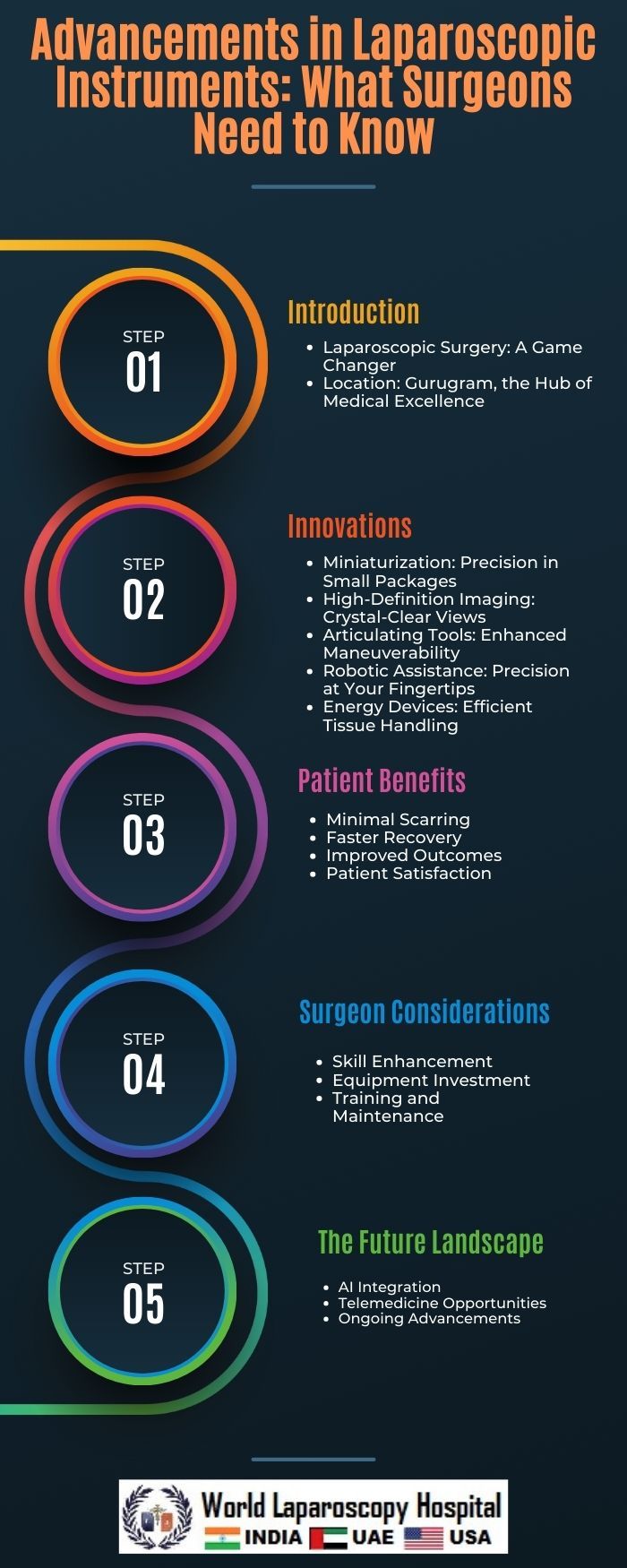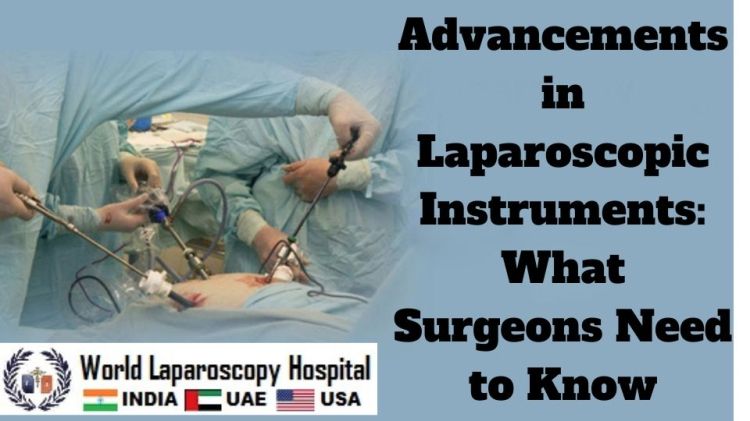Title: Advancements in Laparoscopic Instruments: What Surgeons Need to Know
Introduction
Laparoscopic surgery, often referred to as minimally invasive surgery, has revolutionized the field of surgery over the past few decades. It offers numerous advantages over traditional open surgery, including smaller incisions, reduced pain, quicker recovery times, and shorter hospital stays. The key to successful laparoscopic surgery lies in the quality and efficiency of laparoscopic instruments. In recent years, there have been significant advancements in these instruments, enhancing the capabilities and outcomes of laparoscopic procedures. In this article, we will explore these advancements and discuss what surgeons need to know to stay at the forefront of minimally invasive surgery.

Laparoscopic surgery has come a long way since its inception. The early laparoscopic instruments were relatively simple, consisting of rigid rods and basic grasping and cutting tools. However, with advancements in technology and materials, laparoscopic instruments have undergone a remarkable transformation.
Miniaturization and Precision
One of the most notable advancements is the miniaturization of laparoscopic instruments. Surgeons now have access to smaller, more delicate tools that allow for greater precision during surgery. Miniaturization has expanded the range of procedures that can be performed laparoscopically, from simple appendectomies to complex organ resections.
Articulating Instruments
Traditional laparoscopic instruments had limited degrees of freedom, making it challenging to perform intricate movements within the body. However, modern laparoscopic instruments come with articulating capabilities, enabling surgeons to mimic the natural range of motion of their hands. This makes it easier to navigate tight spaces and perform delicate maneuvers.
Enhanced VisualizationA crucial aspect of laparoscopic surgery is the visualization of the surgical field. Advancements in imaging technology have significantly improved the quality of images seen by surgeons during procedures.
High-Definition Cameras
Older laparoscopic cameras provided grainy and less detailed images. High-definition cameras now offer surgeons crystal-clear visuals of the surgical site, allowing for better decision-making and more precise movements.
3D Visualization
Some laparoscopic systems now incorporate 3D visualization, providing depth perception that was previously lacking in traditional 2D laparoscopy. This depth perception is particularly valuable in tasks that require precise depth judgment, such as suturing and dissection.
Energy DevicesEnergy devices have become indispensable in laparoscopic surgery. These devices are used for cutting, coagulating, and sealing tissue, and they have seen significant advancements.
Ultrasonic and Bipolar Energy
Ultrasonic and bipolar energy devices have become more efficient and precise. Surgeons can now perform tissue dissection and hemostasis with greater control, reducing the risk of collateral damage to surrounding structures.
Advanced Hemostatic Agents
In addition to energy devices, the development of advanced hemostatic agents has further improved the management of bleeding during laparoscopic procedures. These agents can be applied laparoscopically and aid in achieving optimal hemostasis.
Robotics in Laparoscopic SurgeryRobotic-assisted laparoscopic surgery has gained popularity in recent years. Robotic systems offer several advantages, including enhanced dexterity, tremor reduction, and improved ergonomics for surgeons.
The Da Vinci Surgical System
The Da Vinci Surgical System, a widely recognized robotic platform, has been utilized in various laparoscopic procedures. It allows for greater precision in suturing and delicate tasks, making it an invaluable tool in complex surgeries like prostatectomies and hysterectomies.
Training and Certification
As robotics become more integrated into laparoscopic surgery, it's essential for surgeons to undergo specialized training and certification to operate these systems effectively. Staying updated on the latest advancements in robotic-assisted surgery is crucial for those interested in incorporating this technology into their practice.
Ergonomics and Surgeon ComfortSurgeon comfort is a significant consideration in laparoscopic surgery. Prolonged procedures can lead to fatigue and discomfort, affecting surgical outcomes. Advancements in laparoscopic instrument design have addressed these concerns.
Ergonomic Handles
Newer laparoscopic instruments come with ergonomic handles that reduce strain on the surgeon's hand and wrist. These handles are designed to minimize fatigue during extended surgeries.
Improved Instrument Maneuverability
Advancements in instrument design have also improved maneuverability within the abdominal cavity. Surgeons can now perform complex tasks more comfortably, even during long procedures.
Image Analysis and Recognition
AI algorithms can analyze laparoscopic images and recognize anatomical structures and abnormalities. This assists surgeons in identifying critical structures and making informed decisions during surgery.
Surgical Automation
In some cases, AI-driven robots can assist surgeons by performing repetitive tasks, allowing the surgeon to focus on more critical aspects of the procedure. However, the role of AI in surgery is still evolving and requires ongoing research and development.
Future ProspectsThe field of laparoscopic surgery continues to evolve, and future advancements hold great promise. Some potential developments include:
Nanotechnology in Laparoscopy
Researchers are exploring the use of nanotechnology to develop even smaller and more precise laparoscopic instruments. These nanoscale devices could revolutionize minimally invasive surgery further.
Virtual Reality (VR) and Augmented Reality (AR)
VR and AR technologies have the potential to enhance surgical training and visualization. Surgeons may soon use these technologies to practice procedures in a virtual environment before performing them on patients.
Conclusion
Advancements in laparoscopic instruments have transformed the field of surgery, offering patients less invasive options with faster recovery times and fewer complications. Surgeons must stay abreast of these innovations to provide the best possible care to their patients. From miniaturization and enhanced visualization to robotics and AI integration, the future of laparoscopic surgery is exciting and full of potential. As technology continues to advance, so too will the capabilities of laparoscopic surgeons, ultimately leading to improved patient outcomes and a brighter future for minimally invasive surgery.
In Gurugram, where you reside, these advancements in laparoscopic instruments are likely to be highly relevant, as the medical community in the area strives to provide cutting-edge care to patients.
